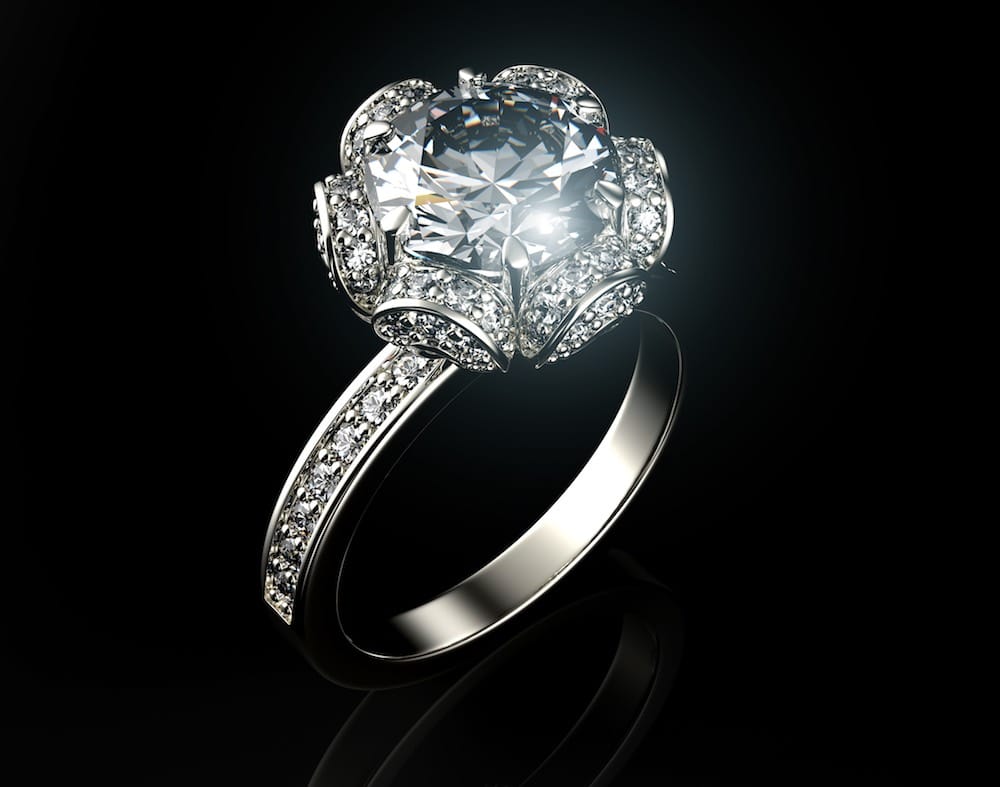Almost every product on the market today has a knockoff, a fake, or an imitation. Diamonds are no different. Everyone purchases products based upon their needs or wants. Those needs (for a diamond purchase) could be to have the very best, to look the part, have a stone that will last forever, or wanting to feel a real commitment has been made. On the flip side of that is a woman who just wants a rock on her hand to say that she is taken, wants to rather save that (extra) money and use it on the honeymoon, or doesn’t want to support conflict or blood diamonds.
This article will describe the different diamond alternatives that are available, with the pros and cons as well. Below is a chart showing the different properties of each “fake diamond”:
Cubic Zirconia Imitation Diamonds
Cubic Zirconia (Zirconium Dioxide) is the most well-known and recognized fake diamond alternative. Most people perceive cubic zirconia as the very low-end of jewelry, almost resembling plastic, but very few are aware of the different grades which have been developed since it’s inception in 1930. The lowest (of the 5) grades of cubic zirconia is A, and rates all the way up to AAAAA. On the Mohs hardness scale, cubic zirconia has a rating of between 8.5 and 9 (diamonds are a 10). The most significant characteristic of a cubic zirconia is that it is flawless. All diamonds have at least some flaws. Cubic Zirconia can come in many different colors (lavender, violet, peridot, pink, champagne, citrine yellow, aqua, and others) by adding trace elements into the manufacturing process.
Moissanite
Moissanite rings are quickly becoming popular for engagement rings. Although the mineral was officially discovered in 1893 by a French scientist, it’s cheaper to synthesize the mineral than it is to extract it. From a cost standpoint, the most significant difference is price, with moissanite being substantially more affordable. Both stones are very brilliant, but moissanite has a higher brilliance than that of a diamond when comparing the refractive index (moissanite’s RI is 2.65-2.69 vs. a diamond having an RI of 2.24).
Synthetic Diamonds
There are only a few companies presently (Apollo Diamond and Gemesis) which can produce a synthetic diamond. They have the same chemical, physical and optical qualities of mined diamonds, except they a produced in a lab controlled environment, are flawless, and sometimes have a slightly yellow tint. Synthetic diamonds usually cost about 30% less than a mined diamond.
Swarovski Imitation Diamonds
Although most people familiar with their products would consider Swarovski to be costume jewelry, crystals for beading, or cute animals at Christmas time, Swarovski recently introduced their Pure Brilliance Cut, the first cubic zirconia in history to adhere flawlessly to the recently introduced, comprehensive set of standards for grading diamond cut quality of the Gemological Institute of America (GIA), the world’s foremost authority on diamond grading. Swarovski stones have the same brilliance (brightness) as diamonds, and are 11% more brilliant than ordinary cubic zirconia. Hollywood has been using these stones for some time, and can be seen in such movies such as Sex and the City, The Young Victoria, Ocean’s Thirteen, Moulin Rouge, and Die Another Day.
As mentioned previously, everyone has their own reasons for how and why they make purchasing decisions. If you are considering purchasing a fake diamond but are sitting on the fence, perhaps one question could help with that decision. If someone asks you if you are wearing a fake diamond or a real diamond and they can’t tell the difference, isn’t that the whole point? If the stone looks good on her hand, the purpose is accomplished.









What’s diffrent swarovski zerconia and FAK Dimond. Please two point are confusion.This quation are Solve me!
Cubic Zirconia very hard stone and only stupid people are speaking the Cubic Zirconia can get cloudy or scratched